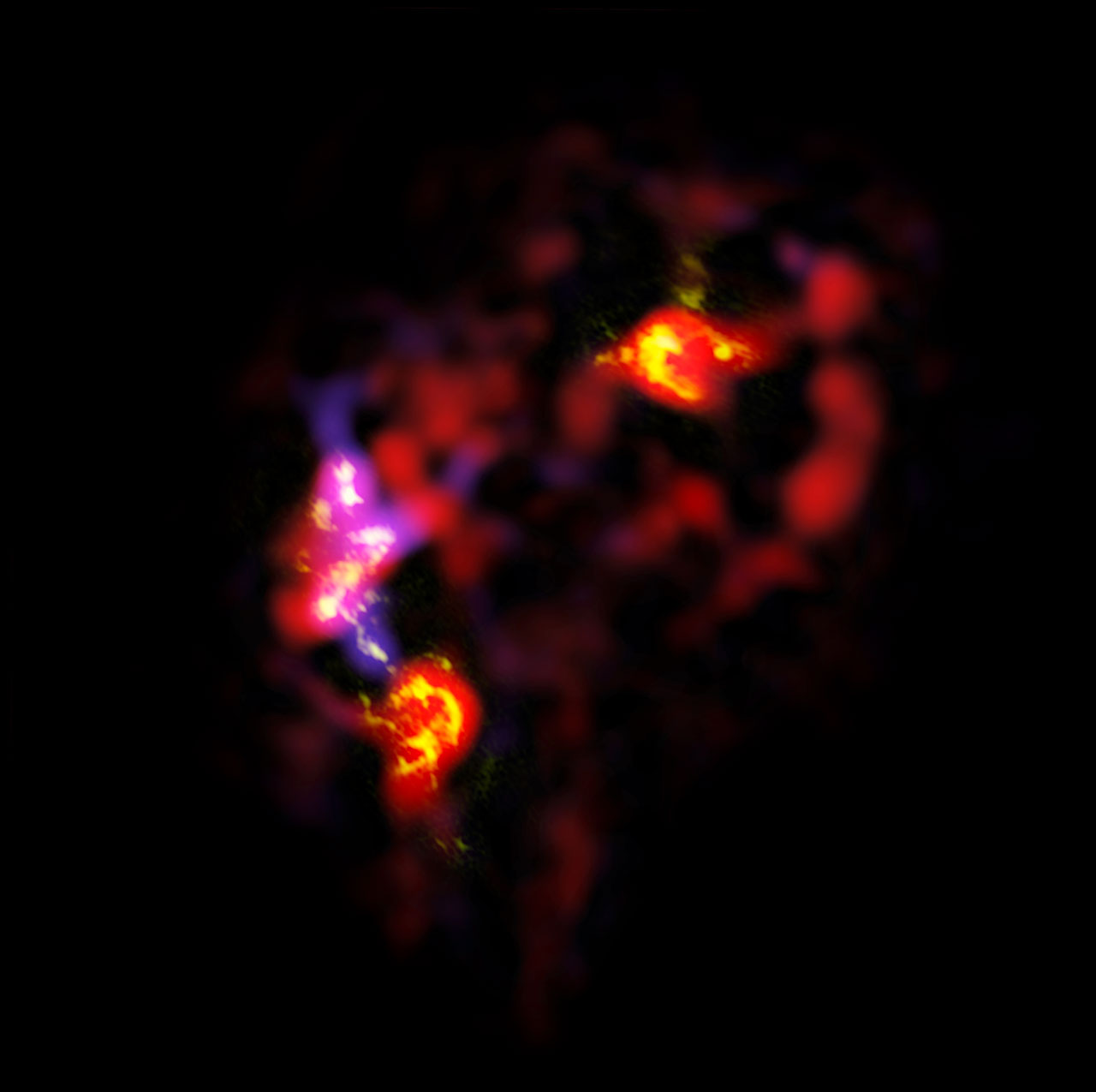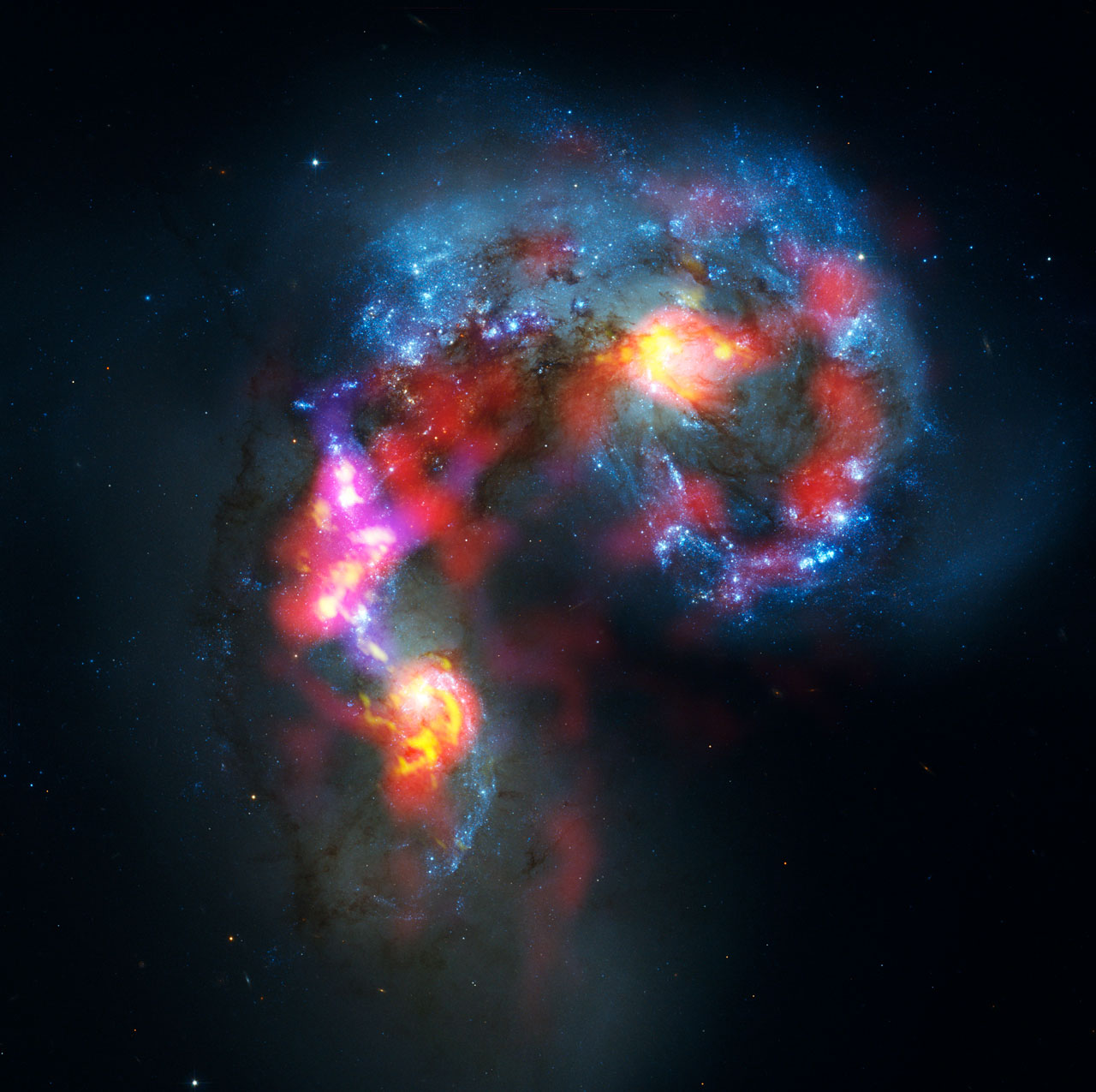A lack of light pollution and anti-science hippies filing lawsuits has made Chile a new favorite spot for space science and the first image we got after ALMA opened its eyes is darn spectacular. What we can't see with visible-light or infrared telescopes, ALMA can see just fine. And the image below is with only 12 of its final 66 radio antennas. It's fitting that the first image was of the Antenna Galaxies.
ALMA sees the Universe in light with millimeter and sub-millimeter wavelengths, a thousand times longer than visible-light wavelengths, which means astronomers can see 'colder' objects in space along with seeing farther. Unlike a back yard telescope, ALMA's linked antennas form one giant telescope and the data is combined by the ALMA correlator, which churns at 17 quadrillion operations per second. The Antennae Galaxies are a pair of colliding galaxies and visible light has shown us the stars in those galaxies but ALMA was even able to see the 'cold' gas clouds where the new stars form. NASA astronomers say the total amount of gas is billions of times the mass of our Sun.
Loading player...
One big goal in astronomy is looking for life elsewhere and, if it is going to be any life as we understand it, that means water. ALMA's ability to detect colder clouds means currently hidden planets may now be visible.
Anyway, you don't want to read about cool pictures, you want to look at them so here we go:

The Antennae Galaxies (also known as NGC 4038 and 4039) are a pair of distorted colliding spiral galaxies about 70 million light-years away, in the constellation of Corvus (The Crow). This view shows an image of the galaxies made by ALMA, in two different wavelength ranges, during the observatory's early testing phase. Credit: ALMA (ESO/NAOJ/NRAO)
This next image is a combination of the ALMA observations in two different wavelength ranges with visible-light observations from the Hubble Space Telescope.

Credit: ALMA (ESO/NAOJ/NRAO). Visible light image: the NASA/ESA Hubble Space Telescope





Comments